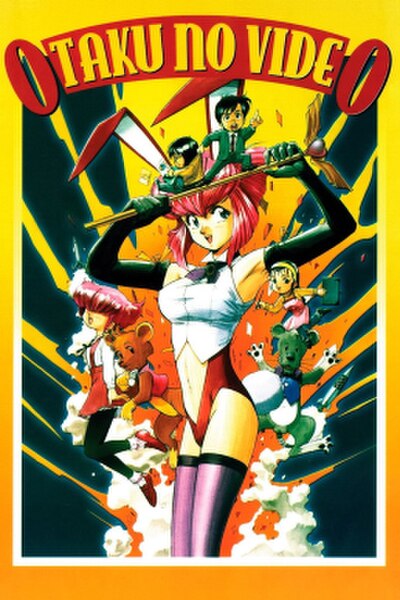FLCL is an original video animation (OVA) anime series created and directed by Kazuya Tsurumaki, written by Yōji Enokido, and produced by the FLCL Production Committee, which consisted of Gainax, Production I.G, and King Records. FLCL is a story following Naota Nandaba, a twelve-year-old boy whose suburban life is disturbed by the arrival of the mysterious Haruko Haruhara. The six-episode series was released in Japan from April 2000 to March 2001 alongside a manga and novel adaptation.
Promotional artwork used on a number of DVD releases of FLCL featuring the three primary characters from the first anime, from top, Canti (the blue robot), Haruko, and Naota.
The Pillows in 2003
Haruko's 1965 Vespa Super Sport 180 and left-handed Rickenbacker 4001 bass guitar
Gainax Co., Ltd. is a Japanese anime studio famous for productions such as Neon Genesis Evangelion, Royal Space Force, Gunbuster, Nadia: The Secret of Blue Water, Kare Kano, FLCL, Magical Shopping Arcade Abenobashi, and Gurren Lagann, which have garnered critical acclaim and commercial success. Evangelion has reportedly grossed over ¥150 billion, or approximately US$1.2 billion. In a discussion at the 2006 Tekkoshocon, Matt Greenfield claimed that Evangelion had grossed over US$2 billion; Takeda reiterated in 2002 that "It sold record numbers of laserdiscs in Japan, and the DVD is still selling well today", as well as for their association with award-winning anime director and studio co-founder Hideaki Anno. The company is headquartered in Koganei, Tokyo.
DVD cover of North American release of Otaku no Video
Gainax's offices in Koganei, Tokyo, circa 2004. The studio since moved to a modest two-story premise, also in Koganei, before moving again to another premise.
Former Gainax headquarters in Koganei, Tokyo since 2013. In 2016, Gainax moved to a room in an apartment in Musashino, Tokyo.






